Agreement On Technical Barriers To Trade Citation
Article 2.2 requires members not to create unnecessary barriers to international trade and, on this basis, to ensure that „technical restrictions are no more restrictive than necessary to achieve a legitimate objective.” The article contains an exhaustive list of legitimate objectives, including national safety requirements and the protection of animal or plant life or health. The Panel in Tuna-Dolphin GATT (I and II) did not clarify this issue, but found in this case that safe identification of dolphins was a technical regulation because of the second sentence. Therefore, it can be assumed that the labelling of NPRP-PPM products is now within the scope of technical rules. [5] If you need help with research on international commercial law, visit the search assistance page on the Georgetown University Law Library website. Or contact the Law Library`s international and foreign law department by phone (202-662-4195) or email (lawintlref@georgetown.edu). Students at the Georgetown Law Centre can arrange a one-on-one research consultation with a librarian. A technical regulation is a document that sets binding conditions. Measures may include terminology, symbols, packaging or labelling requirements and may apply to a product, process or manufacturing process. A standard is a document approved by an accredited body that sets out guidelines or characteristics that are not mandatory. It may contain terminology, symbols, packaging or labelling requirements and may apply to a product, process or manufacturing process.
Standards differ from technical regulations in that they are not binding. Although they are voluntary, producers often have no choice but to respect them for commercial practice. [4] Appendix 1.1 states that the technical rules apply to „product characteristics or associated production processes and methods,” which means that this does not apply to the NPRP. However, in Appendix 1.1 and 1.2, the second sentence, the word „linked” is omitted, indicating that technical requirements may apply to labelling. Some academics argue that the second sentence is read in the context of the first sentence and should therefore be tightened. [3] The Committee is responsible for conducting an annual review of activities related to the implementation and implementation of the OBT agreement, including notifications, specific trade issues, technical assistance activities and OBT litigation. The last annual report was distributed in February 2020. The TBT agreement can be divided into five parts. The first part defines the scope of the agreement, which does not include „industrial and agricultural products” but not sanitary and plant health measures.
